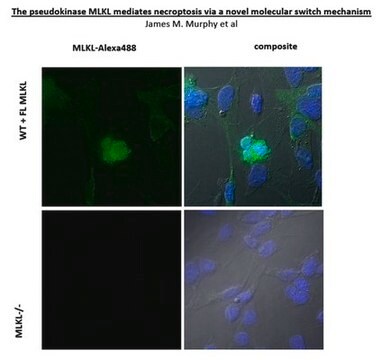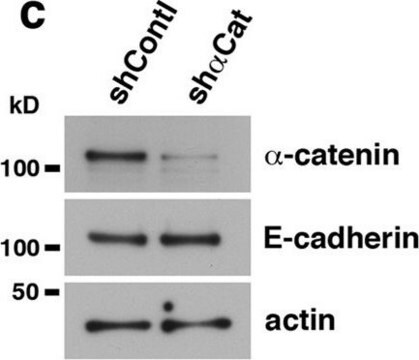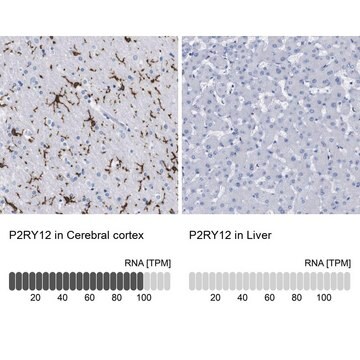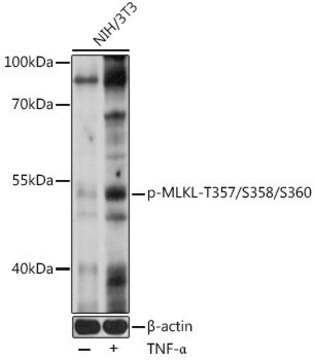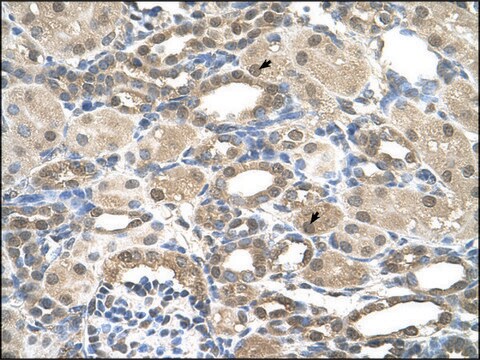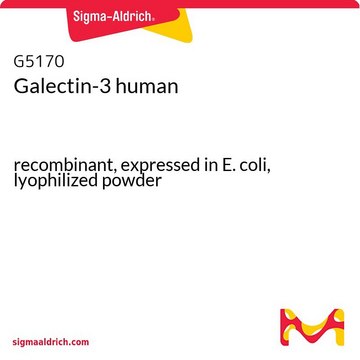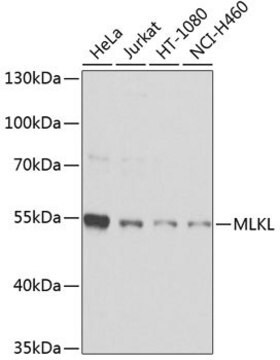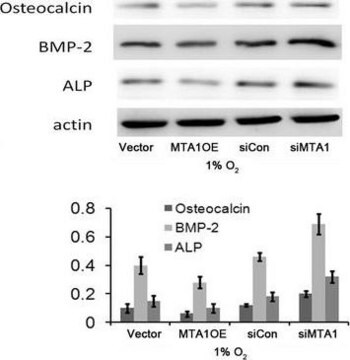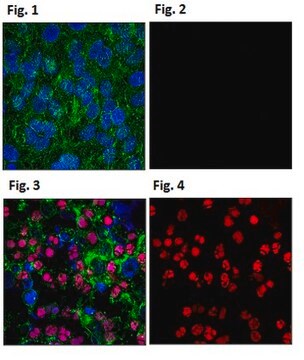MABC1158
Anti-phospho-MLKL (Ser345) Antibody, clone 7C6.1
clone 7C6.1, from mouse
Synonym(s):
Mixed lineage kinase domain-like protein
About This Item
ICC
WB
immunocytochemistry: suitable
western blot: suitable
Recommended Products
biological source
mouse
Quality Level
antibody form
purified antibody
antibody product type
primary antibodies
clone
7C6.1, monoclonal
species reactivity
mouse
technique(s)
ELISA: suitable
immunocytochemistry: suitable
western blot: suitable
isotype
IgG2bκ
NCBI accession no.
UniProt accession no.
shipped in
ambient
target post-translational modification
phosphorylation (pSer345)
Gene Information
mouse ... Mlkl(74568)
General description
Specificity
Immunogen
Application
Immunocytochemistry Analysis: A representative lot detected phospho-MLKL (Ser345) in Immunocytochemistry applications (Rodriguez, D.A., et. al. (2016). 23(1):76-88).
Western Blotting Analysis: A representative lot detected phospho-MLKL (Ser345) in Western Blotting applications (Rodriguez, D.A., et. al. (2016). 23(1):76-88).
Apoptosis & Cancer
Quality
Western Blotting Analysis: A 1:4,000 dilution of this antibody detected phospho-MLKL Ser345 in 20 ug of lysate from MLKL -/- mouse embryonic fibroblasts expressing doxycycline-inducible wild-type MLKL-Flag-C construct and treated with TNF alpha (10 ng/mL) and Z-VAD-FMK (25 uM).
Target description
Physical form
Storage and Stability
Other Notes
Disclaimer
Not finding the right product?
Try our Product Selector Tool.
Storage Class Code
12 - Non Combustible Liquids
WGK
WGK 1
Flash Point(F)
Not applicable
Flash Point(C)
Not applicable
Certificates of Analysis (COA)
Search for Certificates of Analysis (COA) by entering the products Lot/Batch Number. Lot and Batch Numbers can be found on a product’s label following the words ‘Lot’ or ‘Batch’.
Already Own This Product?
Find documentation for the products that you have recently purchased in the Document Library.
Our team of scientists has experience in all areas of research including Life Science, Material Science, Chemical Synthesis, Chromatography, Analytical and many others.
Contact Technical Service